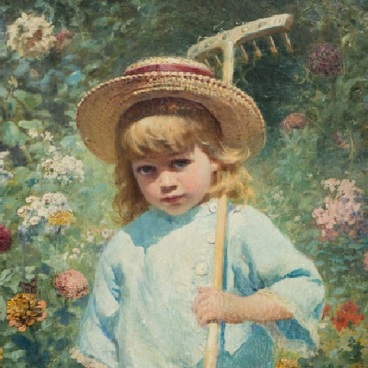The featured precious box is a memorable gift to Field Marshall General Joseph Vladimirovich Gurko. His whole life was inextricably bound with the military service. The Russo-Turkish war became the apogee of the Field Marshall’s glory. Plevna was conquered and Sofia was freed under his command. After the war he was appointed a Governor-General of Warsaw and a Combatant Commander of the Warsaw military region. He retired from the Army in 1894 and afterwards lived in his beloved estate Sakharovo near Tver.
The precious box was made in 1896 of nutwood and decorated with the watercolour miniatures on Gurko’s services in battles. His family’s coat of arms is carved under the crown from both sides. If represents two moons united with a crossbeam where an arrow comes from. In the upper part two dates are written. The first of them is August 12, 1846. It is the day of Joseph Gurko’s graduation as a cornet of the elite troops, the second date marks the 50th anniversary of that event. The watercolour drawings made by a battle painter Viktor Mazurovsky are especially precious. They represent the main stages of Joseph Gurko’s military career. The central picture depicts one of the main episodes of his service, the Russian army’s crossing the Balkans covered with snow during the Russo-Turkish was. Other medallions chronologically depict scenes of service in Saint Petersburg, Ukraine, Odessa, and Warsaw. The miniature drawing is a complicated and laborious work requiring a strict sense of scale and good graphic skills. In this case the work is even more complicated because of the battle genre implicating the combat’s depiction, which means the dynamics, movement, depicting the mimics and gestures.
Viktor Vikentyevich Mazurovsky was a Russian painter of Polish origin. He was born in Warsaw, got his professional education at the Imperial Academy of Arts, where he was awarded with a silver and two golden medals. Apart from that, he became a first grade painter and got a Russian army’s pension. He was a staff painter at the General Staff of the Russian army and created a big number of works dedicated to the 19th century battles. In the 20th century he participated in the Russo-Japanese and the First World War as a painter. Mazurovsky’s works are special with their full correspondence to the historical reality and the accurate depiction. He carefully kept the protocol in his depiction of military servants trying to reconstruct the atmosphere of an army living conditions in his works.
The precious box was made in 1896 of nutwood and decorated with the watercolour miniatures on Gurko’s services in battles. His family’s coat of arms is carved under the crown from both sides. If represents two moons united with a crossbeam where an arrow comes from. In the upper part two dates are written. The first of them is August 12, 1846. It is the day of Joseph Gurko’s graduation as a cornet of the elite troops, the second date marks the 50th anniversary of that event. The watercolour drawings made by a battle painter Viktor Mazurovsky are especially precious. They represent the main stages of Joseph Gurko’s military career. The central picture depicts one of the main episodes of his service, the Russian army’s crossing the Balkans covered with snow during the Russo-Turkish was. Other medallions chronologically depict scenes of service in Saint Petersburg, Ukraine, Odessa, and Warsaw. The miniature drawing is a complicated and laborious work requiring a strict sense of scale and good graphic skills. In this case the work is even more complicated because of the battle genre implicating the combat’s depiction, which means the dynamics, movement, depicting the mimics and gestures.
Viktor Vikentyevich Mazurovsky was a Russian painter of Polish origin. He was born in Warsaw, got his professional education at the Imperial Academy of Arts, where he was awarded with a silver and two golden medals. Apart from that, he became a first grade painter and got a Russian army’s pension. He was a staff painter at the General Staff of the Russian army and created a big number of works dedicated to the 19th century battles. In the 20th century he participated in the Russo-Japanese and the First World War as a painter. Mazurovsky’s works are special with their full correspondence to the historical reality and the accurate depiction. He carefully kept the protocol in his depiction of military servants trying to reconstruct the atmosphere of an army living conditions in his works.



